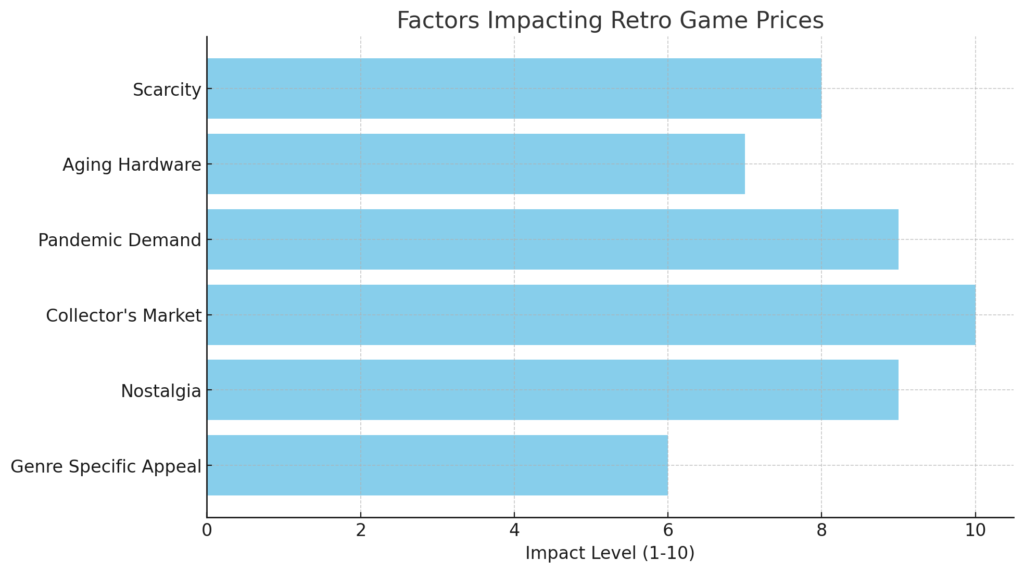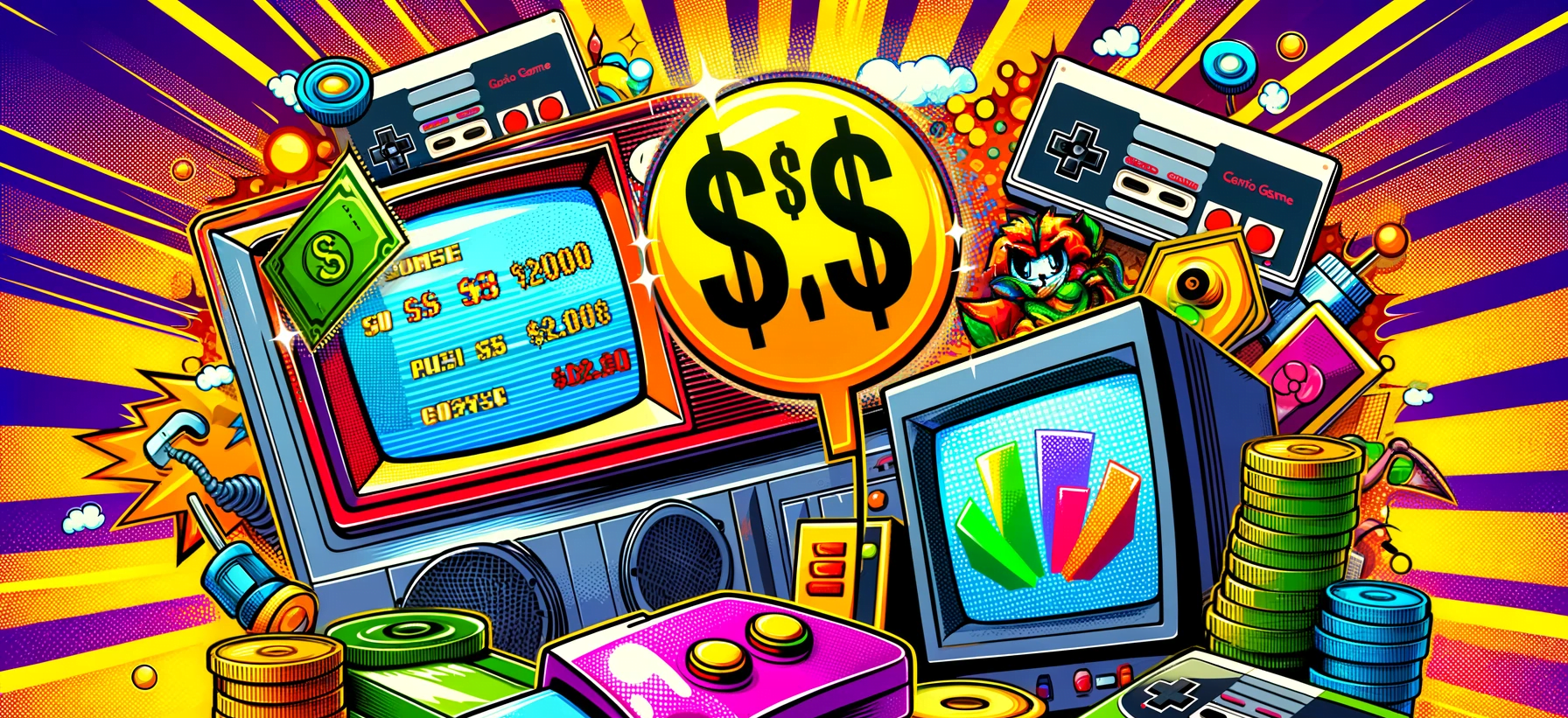Retro gaming, a niche yet increasingly popular hobby, has seen a significant upswing in interest and, consequently, prices. There are multifaceted reasons behind the climbing costs of retro games, factors from the scarcity of certain titles to the aging of original hardware amongst others.
The Rarity Factor: Limited Editions and Collector’s Items
One of the primary drivers of high costs in the retro gaming market is the scarcity of certain titles. Classic games, especially those that had limited production runs, have become highly sought-after collector’s items. This scarcity is not just about the games themselves but extends to special editions and unique variants which were released in limited numbers. As these items become rarer, their value in the eyes of collectors and enthusiasts skyrockets.
Aging Gracefully: The Dwindling Supply of Retro Consoles
Retro game consoles are not just entertainment devices but pieces of history. However, with time, these consoles are continually aging and, in many cases, falling into disrepair. This natural degradation reduces the available supply of functioning units, making those in good condition more valuable and, as a result, more expensive.
Pandemic and Play: The COVID-19 Effect on Game Valuations
The COVID-19 pandemic had an unexpected impact on the retro gaming market. With more people confined to their homes, there was a surge in demand for entertainment, including video games. This increase in demand, particularly for nostalgic titles, led to a marked increase in the value of retro games. Games from popular platforms like the GameCube saw significant price hikes, making them less accessible to the average consumer but more valuable to collectors and enthusiasts.
The Influence of Collectors and Enthusiasts
The retro gaming market is heavily influenced by collectors and gaming enthusiasts. These individuals often view games not just as entertainment but as valuable pieces of history. This perspective transforms the market, turning it into a collector’s domain where the rarity and condition of a game or console significantly influence its price. This collector-driven market is one where sentimentality and nostalgia play as big a role as supply and demand in determining value.
In the next part, we will explore further factors contributing to the high cost of retro games, including the benefits of emulation and the unique allure of cyberpunk adventures in the gaming world. Stay tuned for more insights.
Emulation: A Cost-Effective Alternative?
With the escalating prices of physical retro games, many enthusiasts are turning to emulation as a cost-effective alternative. Emulation offers an accessible way to experience classic games without the high price tag associated with original hardware and cartridges. As discussed in “The Benefits of Emulation: Unlocking the Treasure Trove of Video Game History,” emulation not only preserves the legacy of these games but also makes them more accessible to a wider audience. However, it’s important to note that while emulation provides a practical solution to experiencing these games, it does not satisfy the collector’s desire for physical media, which partly drives the high prices in the retro market.
The Allure of Nostalgia: Emotional Value
Nostalgia plays a significant role in the valuation of retro games. The emotional connection many gamers have with titles from their childhood or teenage years adds an intangible value to these games. This sentimental value often translates into a willingness to pay premium prices for the chance to relive cherished memories. This emotional aspect is difficult to quantify but is undoubtedly a driving factor in the high cost of retro games.
Future Outlook: Will Prices Stabilize?
Looking ahead, the question arises whether the prices of retro games will stabilize or continue to rise. While it’s difficult to predict with certainty, several factors suggest that the market may continue to see high prices. The ongoing interest in retro gaming, coupled with the finite supply of original hardware and games, suggests that prices may remain high or even increase in the future.
In conclusion, the cost of retro games is influenced by a complex mix of factors including scarcity, aging hardware, the impact of the COVID-19 pandemic, collector interest, nostalgia, and specific gaming niches. These elements combine to create a market where prices are driven as much by emotional value as by supply and demand.

The visualization above illustrates the various factors impacting retro game prices and their respective impact levels. It’s clear that elements like the collector’s market and pandemic-driven demand have a significant impact, while genre-specific appeal and aging hardware also play considerable roles in influencing prices. This graphic helps in understanding how these factors collectively contribute to the current pricing trends in the retro gaming market.
As the demand for retro games continues to grow, driven by a mix of nostalgia, collector interest, and unique gaming experiences, it’s evident that the market is evolving. While emulation offers a more accessible option, the allure of physical copies, especially rare and well-preserved titles, maintains its strong hold on prices. The role of emotional attachment and the scarcity of authentic hardware and software are pivotal in shaping the market dynamics.
In the realm of retro gaming, each game holds a story, not just within its coded world but also in its journey through time. From timeless classics that bring back memories of childhood to groundbreaking adventures that were ahead of their time, every piece in a collector’s inventory represents a fragment of gaming history. As we move forward, the interplay between technology, nostalgia, and collector enthusiasm will continue to be key drivers in the valuation of these digital treasures.
Whether you’re a seasoned collector, a casual gamer, or someone fascinated by the evolution of the gaming industry, understanding these dynamics offers a deeper appreciation of the value—both monetary and sentimental—of retro games. The market for these games is not just about playing an old title; it’s about preserving and experiencing a piece of history.
This comprehensive exploration into why retro games are so expensive sheds light on a market driven as much by emotion and nostalgia as by economic factors. As this market continues to evolve, it will be interesting to see how these dynamics play out in the future, influencing both availability and pricing of these cherished pieces of gaming history.
